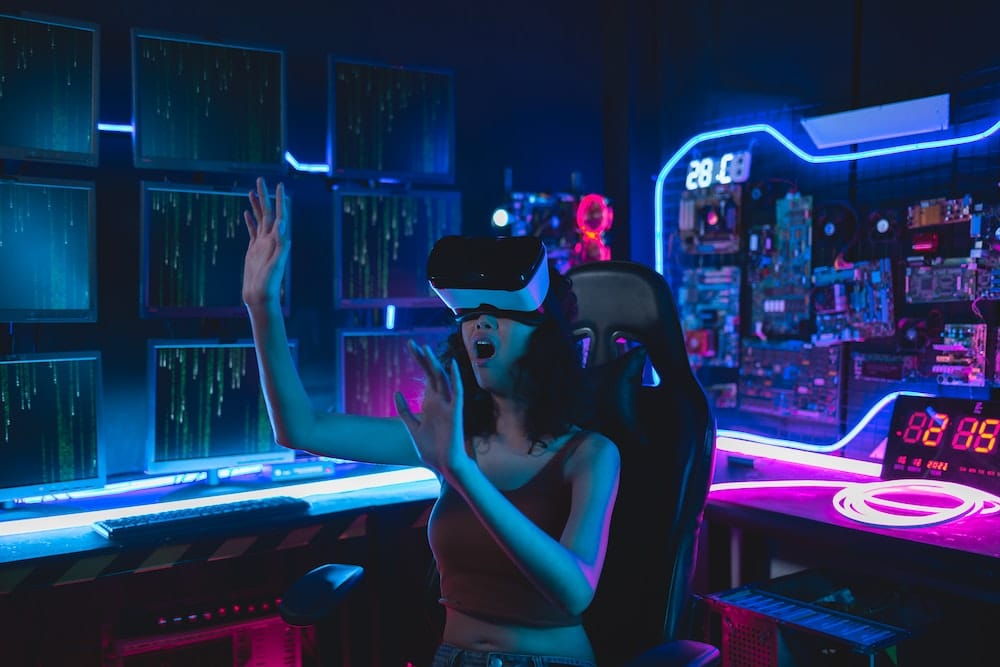The world is shifting towards sustainability, and green buildings are at the forefront of this movement. These buildings, designed to minimize environmental impact, incorporate sustainable materials, energy-efficient systems, and intelligent management methods. But how do architects and engineers ensure that these buildings will perform as intended? The answer lies in the realm of digital technology: Digital Twin simulations.
The Concept of Digital Twins
To truly understand the role of digital twins in green building design, it’s essential to grasp what a digital twin actually is. According to Google scholar, a digital twin is a virtual representation of a real-world entity. In the context of building design, this means creating a comprehensive digital model of a building before it’s constructed.
A lire également : How Is Gamification Being Used to Enhance Cybersecurity Training Programs?
This digital twin reflects not only the building’s physical characteristics but also its behaviors, systems, and interactions with the environment. This comprehensive model can be manipulated, observed, and analyzed in real-time to understand the potential impact of various design decisions.
By using digital twins, architects and engineers can test out different design approaches, assess their implications, and ultimately make more informed decisions. This is particularly important in the design of green buildings, where the goal is to maximize energy efficiency and minimize environmental impact.
A lire en complément : What’s the Future of Brain-Computer Interfaces for Controlling Smart Home Devices?
The Intersection of Digital Twins and Green Building Design
Green building design is a complex process that requires careful consideration of numerous factors. In addition to the traditional concerns of cost, aesthetics, and functionality, green building design must also address energy efficiency, sustainability, and environmental impact.
Digital twin technology can simplify this process by providing a platform where these factors can be explored and analyzed in a controlled environment. For instance, a digital twin can simulate the building’s energy consumption under different conditions, assess the viability of renewable energy sources, and predict the impact of various design elements on the building’s overall energy efficiency.
By going digital, you can experiment with different design components and configurations without the time and cost associated with real-world testing. You can see the long-term effects of your design decisions and make necessary adjustments before construction begins.
Harnessing the Power of Data with Digital Twins
The effectiveness of digital twins lies in their ability to harness the power of data. These digital models are built on a foundation of comprehensive data detailing every aspect of the building, from its structural characteristics to its energy systems.
This data can then be processed and analyzed to generate valuable insights. For example, digital twins can help identify potential issues and inefficiencies in a building’s energy systems, enabling designers to address these problems in the early stages of design.
Moreover, by integrating real-time data from the actual building once it’s constructed, the digital twin can continually update itself, providing a valuable tool for ongoing building management and maintenance.
Digital Twins and Intelligent Building Management
Beyond aiding in the design process, digital twins can also play a pivotal role in the intelligent management of green buildings. Once the building is in use, the digital twin continues to collect and analyze data, monitoring the building’s performance in real-time.
This allows for proactive management of the building’s systems, optimizing energy use, and ensuring ongoing sustainability. If an issue arises, the digital twin can help diagnose the problem, identify its cause, and suggest solutions.
Moreover, as the building ages and environmental conditions change, the digital twin can predict the impact of these changes and inform decisions about upgrades or renovations.
A Glimpse into the Future of Green Building Design
The integration of digital twin technology into the design and management of green buildings represents a significant shift in the construction industry. By leveraging the power of digital simulations, architects, and engineers are better equipped to design buildings that are not only environmentally friendly but also efficient and intelligent.
In a world where climate change and sustainability are increasingly pressing issues, digital twin technology offers a powerful tool for creating buildings that are in harmony with the environment.
Despite the advanced technology involved, understanding the concept of digital twins and their application in green building design isn’t reserved for tech-savvy professionals. You, regardless of your technical background, can appreciate the value and potential of this technology. As we move forward, digital twins will undoubtedly become a common term, associated with the development of sustainable, intelligent buildings for a greener future.
In the end, remember this: digital twin technology is more than just a buzzword. It’s a transformative tool capable of reshaping the construction industry and our approach towards environmental sustainability. The digital twin is no longer a distant concept of the future; it’s here, and it’s making the dream of eco-friendly buildings a reality.
Advantages of Digital Twins in Reducing Carbon Emissions
A key component of green building practices is the reduction of carbon emissions. The construction industry is a significant contributor to global carbon emissions, and designing buildings that are energy-efficient is crucial in mitigating this impact. Digital twins can play a significant role in achieving this objective.
Creating a digital twin of a building before construction allows architects and engineers to simulate the building’s performance under a variety of conditions and scenarios. For instance, they can test how different materials or design choices would affect the building’s energy consumption and carbon emissions. This could involve simulating different weather conditions to see how the building’s insulation performs, or experimenting with different types of renewable energy systems to determine which would be most efficient.
In addition, digital twins can simulate the building’s operation in real time, allowing designers to identify any potential inefficiencies in energy use. This could include, for example, identifying areas where heat is being wasted or where energy consumption is higher than expected. By addressing these issues before the building is constructed, the designers can ensure that the building is as energy-efficient as possible, thus reducing carbon emissions.
Furthermore, the ongoing analysis provided by a digital twin can facilitate energy conservation even after the building is constructed. By monitoring the building’s performance in real time, building managers can identify any issues or inefficiencies and take corrective action, thus ensuring that the building continues to operate at optimal energy efficiency.
Digital Twins in the Context of Smart Cities and Environmental Quality
Smart cities aim to improve urban living through digitization, integration and automation of city services, and one key feature of smart cities is the presence of green buildings. As such, digital twins have a significant role to play in the development of smart cities.
With digital twins, city planners can simulate the impact of proposed green buildings on the city’s infrastructure and services. They can also model how different buildings interact with each other and with the city’s resources, which can help in optimizing the distribution of services and managing resource use more efficiently.
In terms of environmental quality, digital twins can be used to simulate the environmental impact of green buildings. This includes not only their energy consumption but also factors such as water use, waste generation and management, and the building’s impact on local biodiversity.
A digital twin can also model the building’s interaction with the local microclimate, helping to predict how factors such as sunlight, wind, and humidity will affect the building’s performance. This can help designers optimize the building’s design to enhance comfort and wellbeing for its occupants while minimizing its environmental impact.
In conclusion, digital twin simulations are a powerful tool in the design, construction, and management of green buildings. They allow designers to simulate and analyze the building’s performance in real time, facilitating informed decision-making and optimizing energy efficiency. Moreover, they enable proactive building management, helping to ensure the building’s ongoing sustainability. As we strive towards a greener future, digital twins are set to play an increasingly crucial role in the evolution of our built environment.











